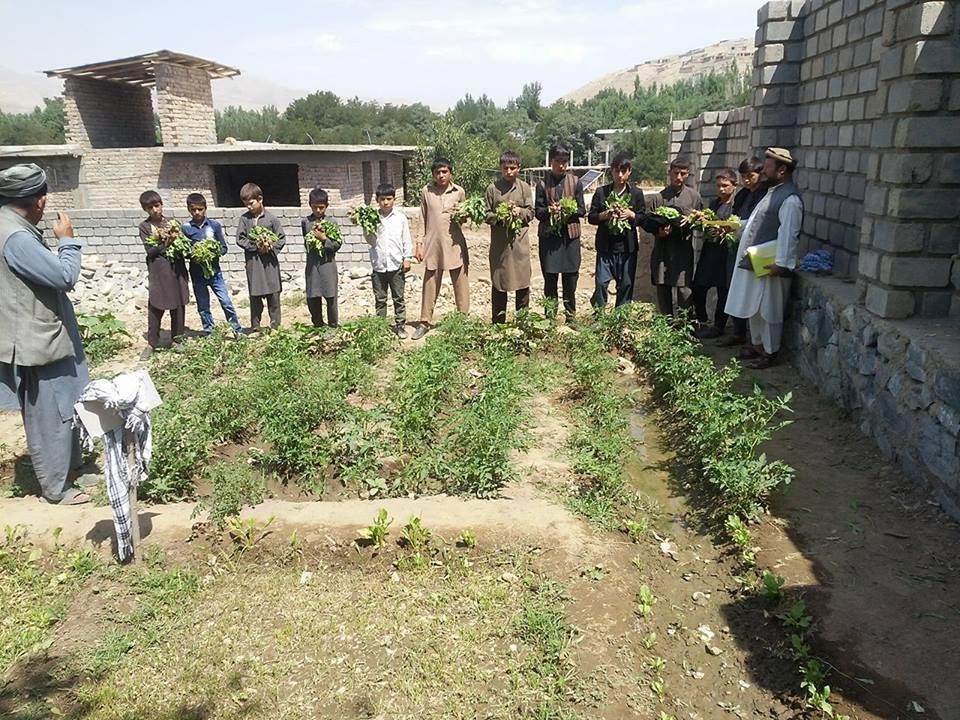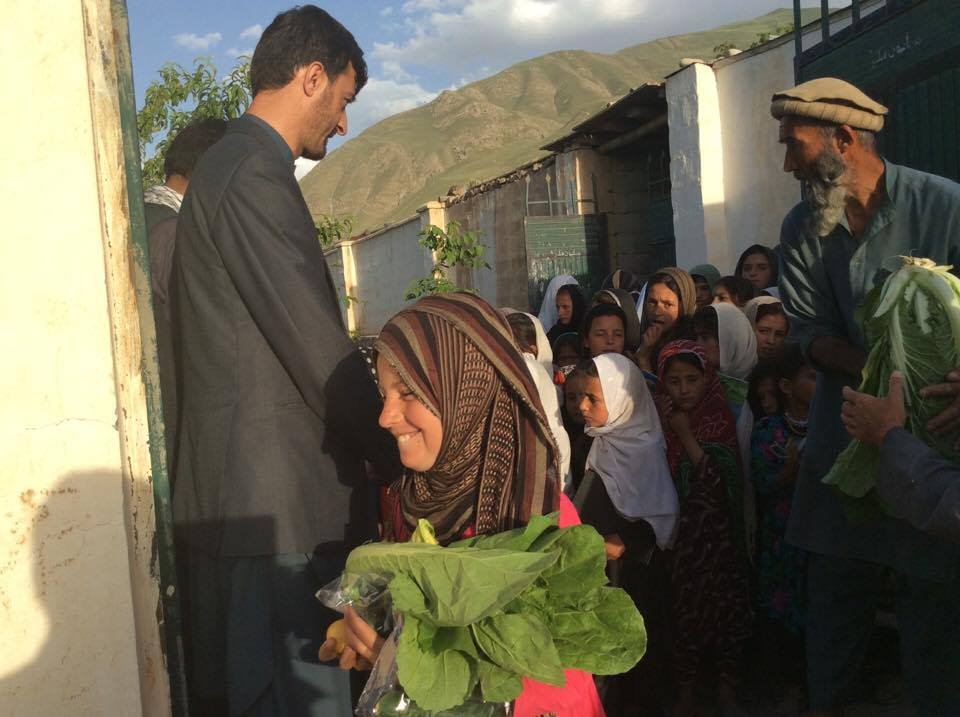By Richard Montgomery | Founding Director, Globalroots.org
Greetings GlobalGiving friends.
We continue to do everthing in our power to empower local humanitarians who are helping children in Afghanistan whose lives have been completely ripped apart by ongoing warfare.
We are proud of our metrics-driven approach to bringing aid to Afghan street children -- 100% of whom are on the streets because of this never ending war.
Our ongoing "foster child" program in Baharak continues to help more than 30 children find a loving home to live in. Though adoption is not allowed in any community governed by Sharia Law, the fostering of children is encouraged. Helping others is actual a pillar of the Islamic faith.
We are also supporting an additional 50 children and their mothers who fled their village in Badakhshan during a recent Taliban invasion. Please see our previous project report to learn more.
Here is a war zone problem that tests the limit of humanity: in a war-torn country like Afghanistan it is virtually impossible for any good family to take in an extra child due to the cost of doing so. Most families are already economically stretched to the breaking point.
This is where Global Roots enters the picture!
Our village garden -- known locally as the Baharak Children's Garden -- produces enough food (including milk from two cows and eggs from over 100 hens) to feed over 85 chidlren! These children all find loving homes because they come with giant bags of food. Loving families will take in children if they come with food!
A recent distribution report with attached delivery photos proved that 425kg of vegetables with a market value of $1,111 USD were distributed to 85 orphaned children at our Children’s Garden in Baharak Afghanistan in June, 2017.
Furthermore, 50 of these 85 children also received classroom education in English, math, Dari and science for a total of 26 hours a month. These 50 children were recently displaced from their homes after a Taliban incursion into their native Badakhshan and had nowhere else to turn.
The total annual cost of our Children’s Garden in Badakhshan is only 10K. With the additional support of 300 fruit trees that will be harvested this fall, the Baharak Children’s Garden is approaching self sustainability. Surplus produce, eggs, milk and honey will make the BCG —including wages paid to teachers, security guards and administrators —100% self sufficient by 2020.
Global Roots Vision Statement
We are pleased to present to you our Vision Statement below. This document will be shared next week with our friends at the UN, including two World Food Program (WFP) country directors, a former ED of the WFP, a country director at UNICEF and a powerful executive at Mercy Corps.
Yep, it's time to get our methodology out there!
All of us at Global Roots are excited to receive feedback on our Vision Statement from the GlobalGiving community. We have no delusions that we are small. Global Roots is a rag tag band of aid workers who believe that locally managed and sourced school and community food programs can FEED THE WORLD'S CHILDREN in a better, healthier and less corruption-prone manner than any method ever used.
Without any further ado, here is our "metrics-driven" Vision Statement.
Global Roots Vision Statement
Food is so much more than just sustenance. It is education. Shelter. Emotional well-being. Life.
Delivering a healthy locally sourced lunch to every grossly malnourished child on the planet is the goal of Global Roots, a registered 501(c)(3) non-profit organization in the USA.
Since its founding in 2007 Global Roots has established “food security”programs for children in global hotspots where social strife and corruption have broken communities apart.
“Children’s Gardens”are an easy, inexpensive and corruption free way to feed the world’s hungriest children.
School lunches + hungry children + oversight = food security
The Global Roots method
We fund locally sourced and managed school lunch programs that convince conflicted parents to send their children back to school. Once fed, children study better, absenteeism drops and test scores go out the roof.
Furthermore, Children’s Gardens galvanize broken or splintered local communities into action. Once we become a trusted community partner we can then work together to tackle other regional or country-specific problems such as preteen prostitution in Cambodia, child abduction in Afghanistan, Female Genital Mutilation (FGM) in East Africa and the scourge of bullying and social exclusion in the USA.
The list of problems goes on and on and the answer begins with feeding children and galvanizing community.
Sustainability and independence is the key to longterm food security
Each of our Children’s Gardens is designed to become 100% self sufficient because all of the food is grown on school grounds and all funds and distribution is controlled by the local community.
When the supply of vegetables from our gardens and eggs from our hen houses exceed demand, surplus food can be sold on the local market. Profits are then returned to fund the school lunch program.
How we fight corruption
Because we do not wire funds through government channels, our programs do not suffer the same corruption that afflict larger aid organizations that are forced to funnel their precious donations and food stuffs through corrupt government channels.
We utilize several layers of oversight to fend off corruptive forces.
Most schools in the world have a tax ID number issued to them from their government that allow them to open a bank account and take direct donations from the outside world. Many schoolmasters, however, aren’t aware of this.
Once a bank account is set up, a school advisory committee is established that usually consists of the school master, PTA president, several PTA members, one local citizen chosen by Global Roots and a Global Roots country director.
The PTA is an excellent oversight tool because parents constantly matriculate with their children and new PTA members join. The evolving nature of the PTA eliminates the threat of collusion and makes it nearly impossible for corruption to take root. We have yet to meet in incoming PTA member who isn’t compelled to keep his or her “Children’s Garden”functioning free of corruption.
Global Roots Case Studies/proof of success
Matulani School District: A Case Study in Success
Eight years ago, Global Roots launchd a Children’s Garden at Matulani Elementary School in Mtito Andei, one of Kenya’s poorest areas. Our program thrived from day one and consists of a greenhouse vegetable garden, an outside kale garden and a large hen house and rabbit hutch.
The facilities are locally constructed and managed using our proven approach to oversight and full transparency. What’s more, much of the program is run by students, gaining them valuable vocational and life skills. The products derived from this programs are then used to feed the entire student body.
Since program launch, Matulani students have benefitted from a solid, nutritious meal every day. For many this is the only meal they get. Because of this, parents now see more benefit in sending the children to school than in keeping them home. As of 2017, the Matulani district boasts a regular attendance rate of 90%! To put that in perspective, many American school districts are happy to strive for 80% regular attendance.
But what’s more, the students aren’t simply showing up. They are benefitting from their attendance and increased nutrition. Since the beginning of our garden program, student matriculation rates have drastically risen. Student scores on the all important KCPE (Kenyan Certificate of Primary Education) exam have also risen. In fact, our student scores have risen consistently each year since program inception.
In the most recent 2016 exams, our students scored an average of 275 on the exam, which makes this district the 4th highest ranked district in the region. And when we remove special private schools from the rankings, Matulani ranks number one!
The Baharak Children’s Garden, Afghanistan
In Afghanistan, we easily replicated the success we had in Kenya by first searching for and testing our current partner. Using the same approach of small scale organic farming, we began to feed local orphaned and itinerant children. Once again, the results were amazing. Not only did our children’s health improve, but the availability of sufficient food enabled local families to foster these children.
Metrics:
A recent distribution report with attached delivery photos proved that 425kg of vegetables with a market value of $1,111 USD were distributed to 85 orphaned children at our Children’s Garden in Baharak Afghanistan in June, 2017.
Furthermore, 50 of these 85 children also received classroom education in English, math, Dari and science for a total of 26 hours a month. These 50 children were recently displaced from their homes after a Taliban incursion into their native Badakhshan and had nowhere else to turn.
The total annual cost of our Children’s Garden in Badakhshan is only 10K. With the additional support of 300 fruit trees that will be harvested this fall, the Baharak Children’s Garden is approaching self sustainability. Surplus produce, eggs, milk and honey will make the BCG —including wages paid to teachers, security guards and administrators —100% self sufficient by 2020.
Summary: Children Gardens and the small scale farming solution
Our small-scale gardening programs bypass many issues which large scale, mass production food programs encounter. Our program utilize mostly local resources. Therefore we don’t face problems with expensive transportation, customs duties, or legal regulations. Because we are small scale and community oriented we avoid most of the corruption which larger aid programs battle. And since we are designed to work within the community and for the community, or gardens address the issues which are unique to each community.
Project reports on GlobalGiving are posted directly to globalgiving.org by Project Leaders as they are completed, generally every 3-4 months. To protect the integrity of these documents, GlobalGiving does not alter them; therefore you may find some language or formatting issues.
If you donate to this project or have donated to this project, you can receive an email when this project posts a report. You can also subscribe for reports without donating.
Support this important cause by creating a personalized fundraising page.
Start a Fundraiser
